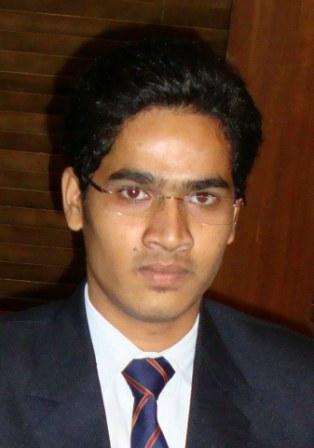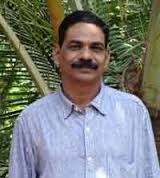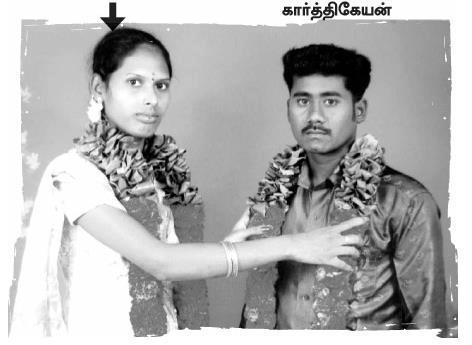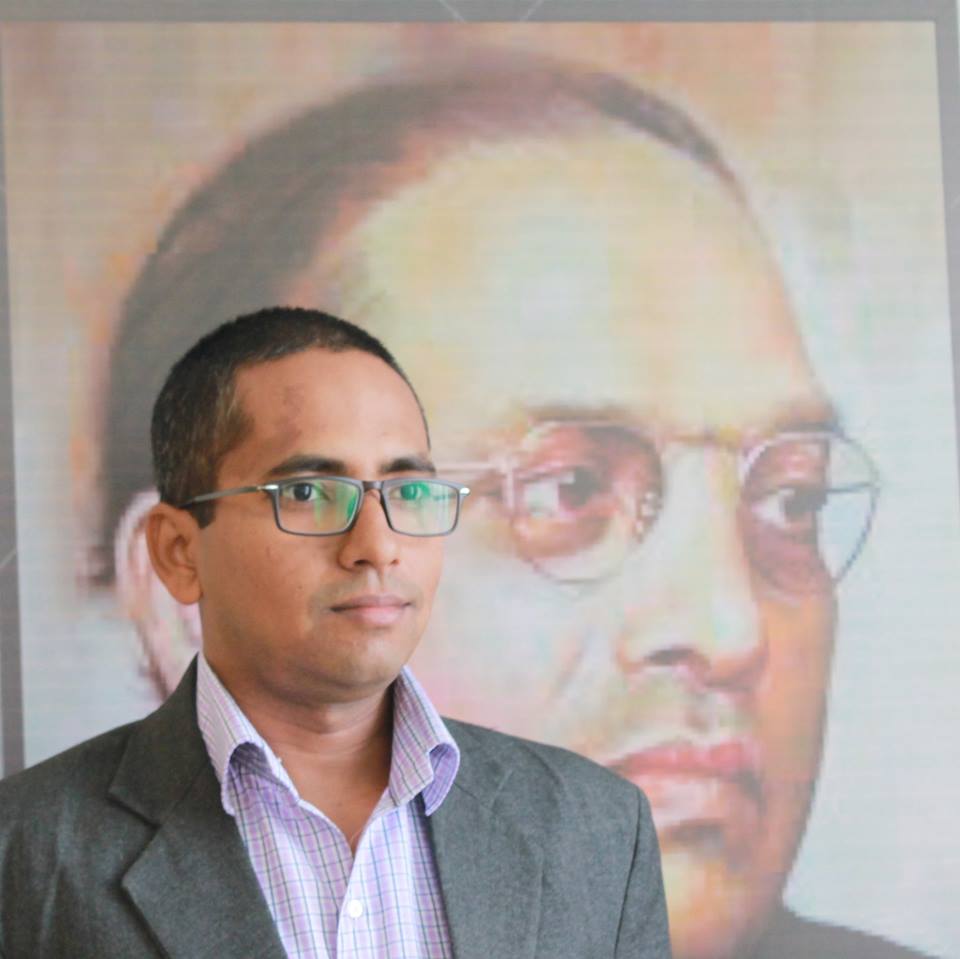Vikas Bagde
 The media not only has a mass reach in the country, but is also able to influence this large population according to its wishes. Most of the time (or rather, all the time), the ruling class use the power of the media to safeguard their interests. You can see this from the coverage of Anna Hazare’s ‘anti-corruption’ movement where there were only a few thousand people, while they gave everyone the impression that the whole country was burning. Everyone knows what happened after that.
The media not only has a mass reach in the country, but is also able to influence this large population according to its wishes. Most of the time (or rather, all the time), the ruling class use the power of the media to safeguard their interests. You can see this from the coverage of Anna Hazare’s ‘anti-corruption’ movement where there were only a few thousand people, while they gave everyone the impression that the whole country was burning. Everyone knows what happened after that.
Media doesn’t exist only to disseminate news. Its main purpose is to create opinion and generate debate in the country, on issues of ‘public interest’. The media imposes its opinions on the common people who go to work, labour or farm every day and want to know what is happening in the country when they return in the evening. After working the whole day, they are perhaps not in a position to think of anything beyond what the media tells them. Another reason the common people believe the channels is that when they switch on the TV, they see the same issue on every channel – making them believe that it is an issue of national importance. These innocent people do not know that all those media houses have mutual consensus and common agendas. Such victimized people don’t even realize that whatever opinion they have is not actually theirs, but is that of those media houses. The entire time, they live under an illusion that they are reacting on their own, while in reality, their reactions to any situation are enforced by the media manipulators, who do all of this very shamelessly.
Media houses not only safeguard their interests by propagating their agenda but also put millions of lives at stake without shame. If we take Rohith Vemula’s example, the media never gave space when he and his friends were protesting. They gave space in the news after his institutional murder but never put pressure on the state machinery to take action against the culprits, who are still roaming free. To lose a person like Rohith is a great blow that no country can afford, but intellectual persons like him are always a danger to the associates of media houses, because of which his institutional murder was an event of celebration for them – and they acted accordingly. None of the media houses raised a question on the management and autonomy of Central Universities.
To mitigate the effects of the movement that emerged after Rohith’s death, they gave space to Kanhaiya Kumar, and a debate on nationalism was artificially initiated so that all the attention of the country’s population that was so far concentrated on Rohith’s issue, would be diverted towards the artificial issues of Kanhaiya and fake nationalism. During this episode, one thing becomes very clear, that even though the Left of India called themselves as protectors of the interests of labourers and students and as nationalists and patriots, they did not actually care about labourers, farmers or even students. They only try to safeguard their interests so that they can go on world tours and can receive international awards for raising issues, while they never try to find solutions for the issues because that is not their concern. They are neither farmers, labourers nor the students who face trouble.
After the recent Una episode, all the news houses gave space for the news for a few days. The video had gone viral, so unwillingly, they gave space for the news. They went on to show only the victimhood of the Dalits – neither the media houses nor their associates want to project the strong or assertive side of Dalits so that rest of them could gain strength or assert their identity. They always want to see Dalits as victims than as a strong community and they will not give space for any news of that sort. In the Una incident, they gave space for news about the victims but did not show the news when they came together as a strong united power. They did not give space in the news when Dalits around the country gathered in lakhs in Una and asserted their identity and strength -not even a third-page-story.
It is not that atrocities are happening for the first time; they always existed but never came to light because no space was given to them. Today the same forces are thinking that they can door propagate whatever they want since their good allies are in power, but this is not the time of their monopoly –this is the era of social media. Nowadays, social media is the only medium we have that we can use to make space for the issues of Dalits. Recently in Nagpur, Vijay Darda, MP and editor of a Marathi newspaper, wrote an article against reservations and by the next day the subscription to the paper reduced in half. This is what happens when people start asserting their identity.
Now, more of our educated youths have started using social media and any activity against Dalits spreads easily and people start uniting very quickly. In recent times there has been a chain of such atrocities on Dalits, after which there was a huge mobilization of people. Mass mobilization of the oppressed always rings danger to the oppressor. So they have started manipulating people along with their associates, since they have a lot of resources as well as the state machinery to execute any dirty plan that is aimed at maintaining their hegemony and hierarchy.
Once again, a very traditional and time-tested strategy of divide-and-rule has come into the picture. More accurately, a division of labourers on the basis of division of labour. A hostile environment is created, so that two communities among the oppressed start fighting each other and all attention is diverted from issues of public interest. The oppressors do this whenever they feel a threat towards their hegemony. The cards of nationalism, patriotism and India-Pakistan issue are taken out and all ongoing issues are thrown into the dustbin – the common people are forced to forget about issues of public interest.
The oppressors have been manipulating very systematically since their forefathers. First they create ground for it and then slowly start pushing an agenda. One of the most prominent examples is pride in caste, community and ‘country’. This is the ground that took much effort to prepare, and now it has become so concrete that they can do anything without actually getting involved in the actual conflict. It means that in any situation of conflict, bahujans of India will lose either way. We can see this in the thousand-year history of the caste system – they divided the labourers with the division of labour.
Now in Maharashtra, there is a ‘conflict’ going on between Marathas, the former ‘rulers’ and Dalits, who are facing atrocities. Basically, no Maratha knows for what they started gathering and raising their voices but they have now become a pawn in someone else’s game. The whole movement has turned upside down and has become about Dalits protesting to save the Atrocity Act and Marathas protesting to get the act abolished. It is not difficult to understand things once we change the perspective and think: what exactly do the Marathas need? What are their demands? What is more important for them – share in power or farmers’ suicide or representation in jobs? If the common people are speaking like that, then who are the ones who are forcing them to take such a stand?
Looking at their demands, can one conclude that they want to commit more atrocities? From earlier experiences we can see that these acts have not been enforced as they were supposed to be. Instances in which culprits under Atrocities Act were punished are very rare. Then why the need to abolish this act? Since most of the atrocities are committed by Marathas and OBCs, the issue has now become SCs vs Marathas.
To understand why the oppressors artificially create this conflict between SCs and OBCs, we can go back by a few months, when the Rohith episode was happening. A new debate had started about representation of OBCs in central universities, government jobs, as representatives and in ministerial positions. People started to think with this perspective. Except for some people, OBCs and SCs were uniting on the issue of Rohith. That was the danger-bell for the ruling class. Some of the OBCs also started identifying themselves as Dalit, which meant that they were becoming aware of their history and identity. It would be a huge problem if all Dalits started to assert their identity. The number and majority would be in favour of Dalits, which means that the oppressors would have to step down from all the positions they occupied unethically.
In such a scenario, the oppressors and their associate media houses played the card of caste pride and began portraying reservations and Atrocities Act as a violation of OBC rights. The Marathas, due to the caste arrogance combined with skewed distribution of land and a lack of interest in education, feel like they are falling behind in the race. Media discussions promote the view that they are falling behind because the underprivileged are taking their share. Since independence, neither the media nor the government provided attention to basic issues of public interest, which is the reason for their suffering, but through these discussions, the fingers are being pointed toward Dalits and tension is being cautiously created between these communities.
If we now look at the current situation, Marathas and Dalits across Maharashtra are protesting. The environment is being made hostile so that they would start hating and fighting each other in order to secure their interests. Now all leaders from both sides think that they can take advantage of the situation and practice their leadership. From the stands taken by leaders on both sides, it seems like they are playing into the oppressor’s hands and acting reactively, taking stands over manufactured situations. All the protesters and leaders should think about their common interest instead of acting reactively, because illusions are being created to make them act like this. It will be a wise decision to think through about their next move before taking any action. Otherwise, all those castes that are currently having high income and ‘prestige’ due to their wealth will come to the same level as Dalits in the near future, and due to their history, no Dalit will come to help and they would have to fight alone with very minimum resources. The ruling class and media houses only recognize power, dominance and wealth, so they constantly keep changing their associates. Maybe next time, the allies will not be the same but the oppressors will always be there and so will the oppressed. So it will be wise to take decisions with some vision, rather than aiming solely at immediate outcomes.
~~~
Vikas Bagde is a mechanical engineer. He has cleared the entrance exam of TISS and topped in it but has not joined it. He is preparing for GRE. Right now he is on a youth exchange program sponsored by the Norwegian government as a part of which he was in Norway for a few days and is now in Nepal.










